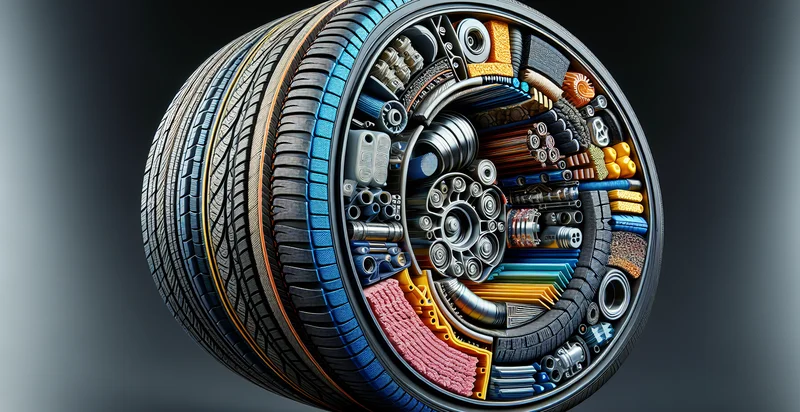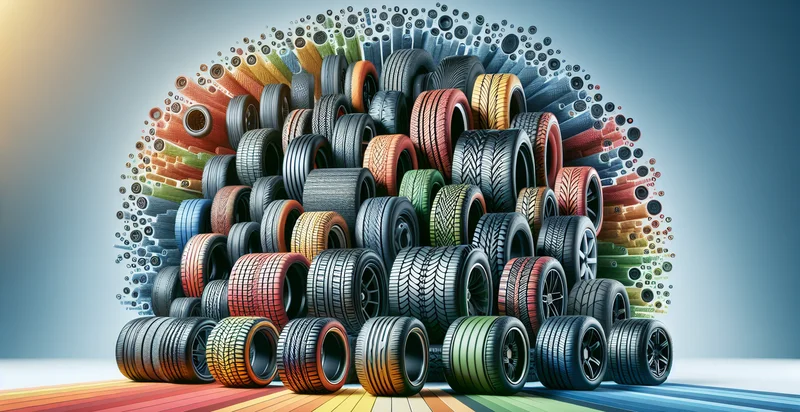Identify what material a tire is made from
using AI
Below is a free classifier to identify what material a tire is made from. Just upload your image, and our AI will predict what material a tire is made from - in just seconds.

Contact us for API access
Or, use Nyckel to build highly-accurate custom classifiers in just minutes. No PhD required.
Get started
import nyckel
credentials = nyckel.Credentials("YOUR_CLIENT_ID", "YOUR_CLIENT_SECRET")
nyckel.invoke("what-material-a-tire-is-made-from", "your_image_url", credentials)
fetch('https://www.nyckel.com/v1/functions/what-material-a-tire-is-made-from/invoke', {
method: 'POST',
headers: {
'Authorization': 'Bearer ' + 'YOUR_BEARER_TOKEN',
'Content-Type': 'application/json',
},
body: JSON.stringify(
{"data": "your_image_url"}
)
})
.then(response => response.json())
.then(data => console.log(data));
curl -X POST \
-H "Content-Type: application/json" \
-H "Authorization: Bearer YOUR_BEARER_TOKEN" \
-d '{"data": "your_image_url"}' \
https://www.nyckel.com/v1/functions/what-material-a-tire-is-made-from/invoke
How this classifier works
To start, upload your image. Our AI tool will then predict what material a tire is made from.
This pretrained image model uses a Nyckel-created dataset and has 20 labels, including Adhesives, Aluminum, Carbon Black, Elastomers, Fiberglass, Foam Materials, Inner Liner, Metal, Natural Rubber and Nylon.
We'll also show a confidence score (the higher the number, the more confident the AI model is around what material a tire is made from).
Whether you're just curious or building what material a tire is made from detection into your application, we hope our classifier proves helpful.
Related Classifiers
Need to identify what material a tire is made from at scale?
Get API or Zapier access to this classifier for free. It's perfect for:
- Automated Quality Control: In manufacturing facilities, an automated image classification system can quickly assess tire material types on the production line. This improves quality control processes by identifying defects or deviations in tire materials in real time, ensuring only high-quality products proceed to market.
- Material Optimization: Tire manufacturers can utilize this function to analyze the composition of materials in tire production. By identifying the performance characteristics of various materials used in existing tires, companies can optimize their formulation for better durability, pricing, and performance.
- Recycling and Sustainability Initiatives: Waste management companies can use the image classification function to categorize discarded tires based on the materials. This enables better recycling processes and helps companies meet sustainability goals by efficiently determining which materials can be reused or recycled.
- Market Research and Development: R&D teams can leverage this technology to analyze competitor products by identifying tire materials utilized in the market. This insight facilitates the development of innovative tire solutions based on current material trends and consumer preferences.
- Regulatory Compliance: Companies can implement the image classification function to ensure compliance with industry regulations concerning tire material safety and environmental impact. By identifying materials, firms can confirm that their products meet legal standards and avoid penalties.
- E-commerce Verification: Online tire retailers can use this function to verify the authenticity of tire material claims made by suppliers. By accurately classifying materials from product images, retailers can enhance consumer trust and reduce the risk of fraud in their product listings.
- Consumer Education: Automotive platforms can integrate the classification function to provide consumers with detailed information about tire materials. Educating customers about the benefits and drawbacks of different materials can drive informed purchasing decisions and enhance overall customer satisfaction.


